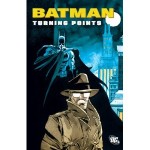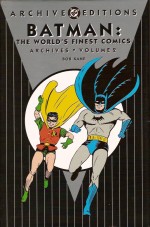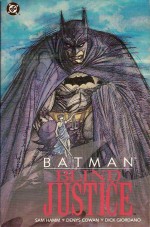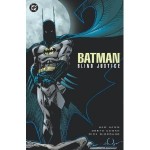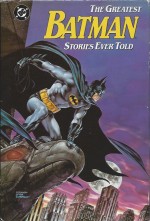
By Chuck Dixon, Julian Lopez, Carlos Rodriguez & Bit (DC Comics)
ISBN: 978-1-84856-070-3
Following the forcible dissolution of Nightwing’s covert and pre-emptive strike force, Batman once again took over the leadership of the Outsiders and, after a daunting series of auditions, settled on a core squad comprising the Martian Manhunter, Metamorpho, Grace, Katana and Catwoman, with standby options on a number of others and rejecting mass-moving powerhouse Thunder mooching about on probation…
This first slim tome collects issues #1-5 of the second run of Batman and the Outsiders, and is the initial book of a triptych of volumes (the last still forthcoming) covering an epic struggle against a terrifying extraterrestrial plot which threatened to engulf the Earth; eventually growing to involve a goodly portion of the planet’s metahuman protectors…
Written throughout by Chuck Dixon and inked by Bit, the breakneck action erupts in ‘The Chrysalis’, illustrated by Julian Lopez, wherein master strategist Batman dispatches Katana, Metamorpho and Catwoman to infiltrate the skyscraper HQ of mystery Eurotrash money-man Mister Jardine, whose corporate conglomerate has been making some very peculiar purchases – items dubious enough to set alarms roaring in the Bat-computer…
With the Martian Manhunter inserted as a psionic Trojan Horse inside the building, the infiltrators discover the enigmatic billionaire has not only illegally stockpiled radioactive and fissionable materials but also unearthed a deadly anti-metahuman weapon of the sort which nearly overran the world during the Infinite Crisis…
The Observational Metahuman Activity Construct – or Omac – is a nanotech-purposed cyborg designed to overcome any super-powered foe, and in ‘Infestation’ (pencilled by Carlos Rodriguez) the freshly repurposed death-machine goes after the Outsiders whilst the Manhunter plunders Jardine’s data.
With the situation rapidly going south, Thunder defies Batman and rushes to the rescue, proving his assertion that she is not professional enough for the team. Already en route, rowdy Amazon Grace Choi is preparing an escape route for the sorely pressed team when, in a desperate move, the Element Man channels all the citadel’s power through his own unique body and immobilises the Omac…
‘Throwdown’ (with Lopez returning to the pencil art) sees the terrified and self-preserving Catwoman quit and replaced by Cassandra Cain, the reformed assassin who was briefly the third Batgirl, as Batman and the Outsiders defy the Justice League by refusing to destroy the captured nano-nemesis.
When it suddenly reactivates itself, both teams are simultaneously attacked and only a tremendous joint effort subdues it once more.
In the aftermath, JLA-er Geo-Force quits and rejoins his old Outsider allies, unaware that the Dark Knight has manipulated his former comrades, allowing his science squad Francine Langstrom and Salah Miandad time to reprogram the death machine as another member of the covert team…
In ‘Mission: Creep’ a pair of mysterious strangers also enlist, as does radical wild card Green Arrow, before the Outsiders invade French Guiana to stop a commercial space launch. Langstrom’s investigations have revealed that the sinister Jardine has been using Omac technology to create new biological species designed to live off-Earth…
Whilst the billionaire moves to take over the site, eliminating the launch personnel and loading two ships with his mysterious payloads, in the surrounding rainforest wildly differing perspectives and methodology have set the Outsiders at each others’ throats…
Meanwhile in Gotham, Salah has finally erased the captured cyborg’s protocols and dubbed the reformed member Remac, blissfully unaware that the giant automaton still has a measure of its old sinister sentience…
And in the jungle, Batman and his squad close in on the launch-pad determined to stop whatever Jardine wants rocketed into space, blithely oblivious to the cadre of metahuman mercenaries waiting to ambush them…
This first cliffhanging chronicle concludes with ‘Ghosts’ as Batman’s ethereal emissaries Ralph and Sue Dibny (dead but still battling evil as Ghost Detectives) scuttle the trap, allowing Metamorpho, Katana, Green Arrow and Batgirl to overcome murderous assassins Gunhawk, Militia, Bunny and Camorouge, whilst even Jardine’s personal Omac bodyguard is unable to withstand the gravity-warping power of Geo-Force.
Nevertheless, the mission is not a success as one of the ships manages to launch, carrying with it into appalling unknown dangers the valiant but vastly over-matched Metamorpho…
To Be Continued…
Fast and furious, beautifully illustrated and totally mesmerising, this spectacular romp is a fabulous Fights ‘n ‘Tights thriller to delight fans of the genre and art-lovers will also adore the gallery of covers and variants by Doug Braithwaite, Ryan Sook, Eric Battle & Art Thibert.
Straightforward action adventure at its very best…
© 2007, 2008, DC Comics. All Rights Reserved.

